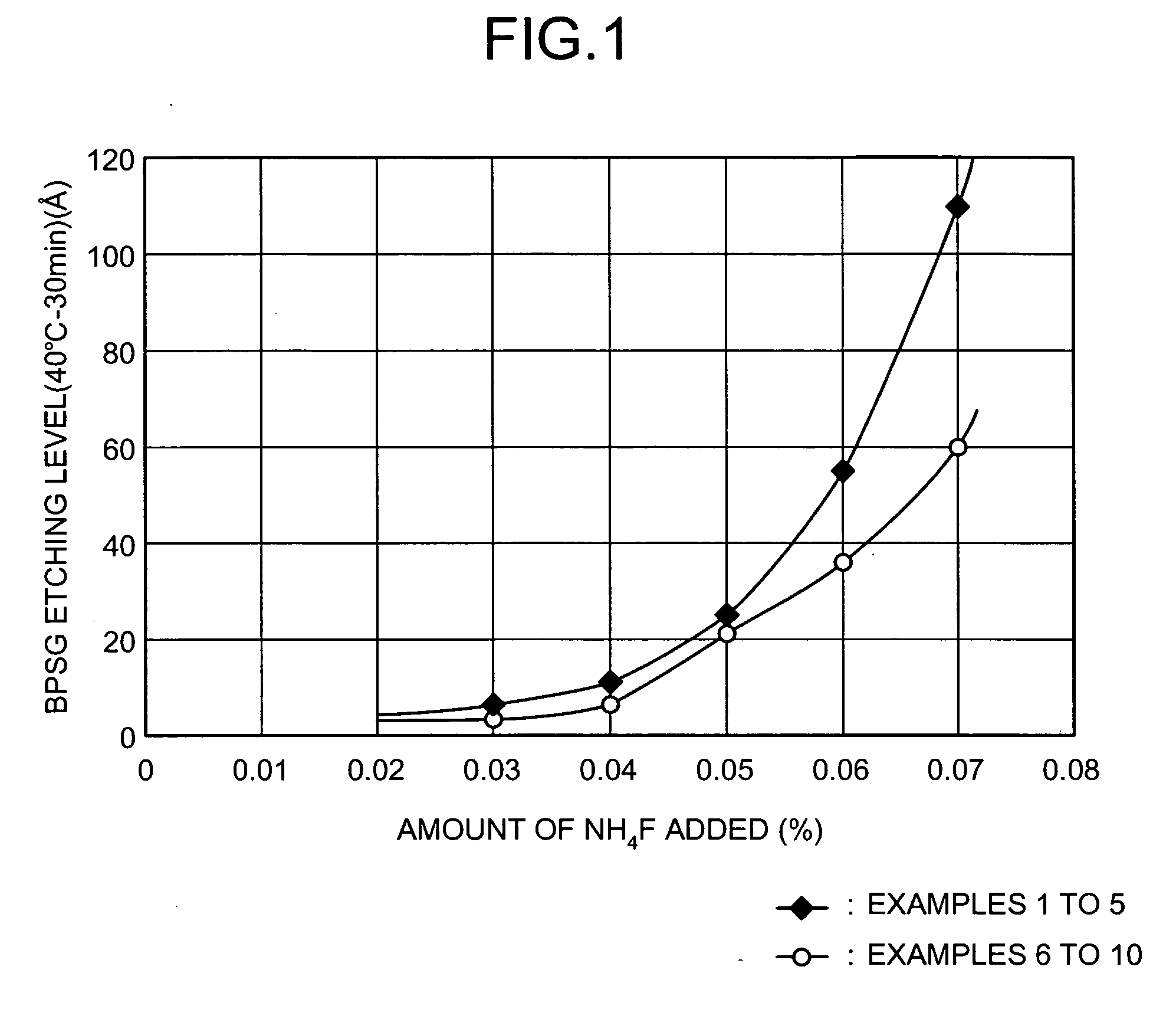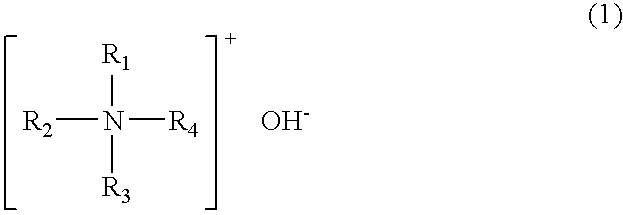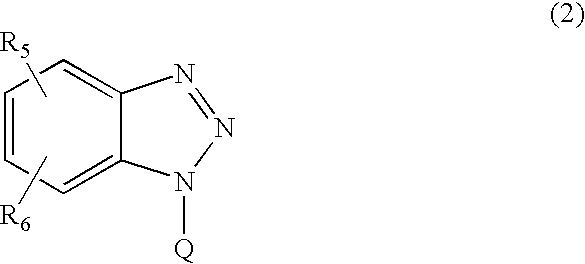Photoresist stripping solution and method of treating substrate with the same
a photoresist film and stripping solution technology, applied in the field of photoresist film stripping solution and a method of treating a substrate with the same, can solve the problems of not taking into account damage to the recent low-k film that is significantly porous, reducing the yield of semiconductors, etc., and achieves excellent stripping performance and low electricity consumption. , the effect of improving the stripping
- Summary
- Abstract
- Description
- Claims
- Application Information
AI Technical Summary
Benefits of technology
Problems solved by technology
Method used
Image
Examples
examples
[0099] The present invention is explained in more detail based on Examples below. Note that the invention is not limited by the Examples.
preparation examples 1 to 5
[0100] As shown in Table 1 below, stripping solutions 1 to 5 as the photoresist stripping solutions of the present invention were prepared by mixing ammonium fluoride (NH4F) as the component (a), 70 mass % of γ-butyrolactone as the component (b), 0.05 mass % of 1-thioglycerol and 0.09 mass % of 3-mercaptopropionic acid as the component (d), and 0.1 mass % of acetylenol as another component, the balance being water as the component (c). Ammonium fluoride as the component (a) was incorporated in amounts of 0.03, 0.04, 0.05, 0.06, and 0.07 mass % based on the total mass of the stripping solutions 1 to 5, respectively.
preparation examples 6 to 10
[0101] As shown in Table 1 below, stripping solutions 6 to 10 as the photoresist stripping solutions of the invention were prepared by mixing ammonium fluoride (NH4F) as the component (a), 50 mass % propylene glycol (PG) as the component (b), 0.05 mass % 1-thioglycerol as the component (d), and 0.1 mass % acetylenol as another component, the balance being water as the component (c). Ammonium fluoride as the component (a) was incorporated in amounts of 0.03, 0.04, 0.05, 0.06, and 0.07 mass % in the stripping solutions 6 to 10, respectively.
PUM
| Property | Measurement | Unit |
|---|---|---|
| dielectric constant | aaaaa | aaaaa |
| mass % | aaaaa | aaaaa |
| mass % | aaaaa | aaaaa |
Abstract
Description
Claims
Application Information
 Login to View More
Login to View More - R&D
- Intellectual Property
- Life Sciences
- Materials
- Tech Scout
- Unparalleled Data Quality
- Higher Quality Content
- 60% Fewer Hallucinations
Browse by: Latest US Patents, China's latest patents, Technical Efficacy Thesaurus, Application Domain, Technology Topic, Popular Technical Reports.
© 2025 PatSnap. All rights reserved.Legal|Privacy policy|Modern Slavery Act Transparency Statement|Sitemap|About US| Contact US: help@patsnap.com



